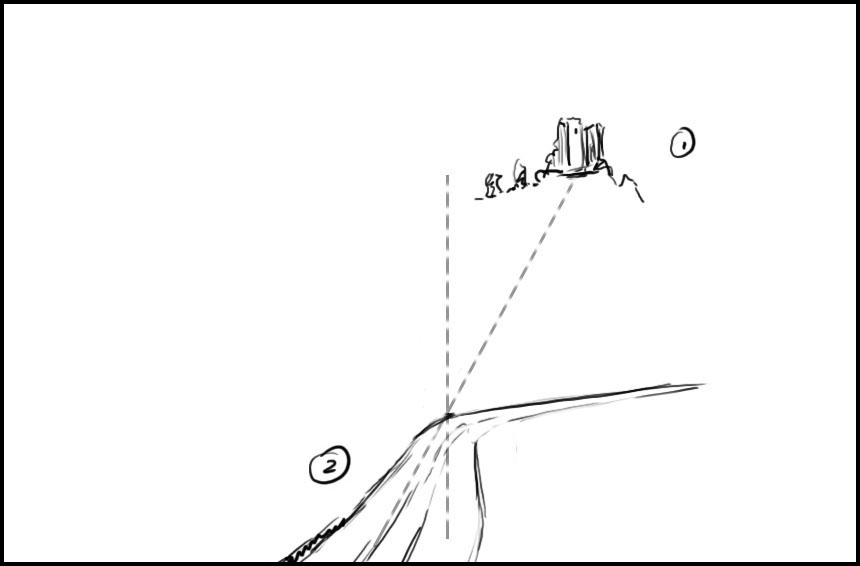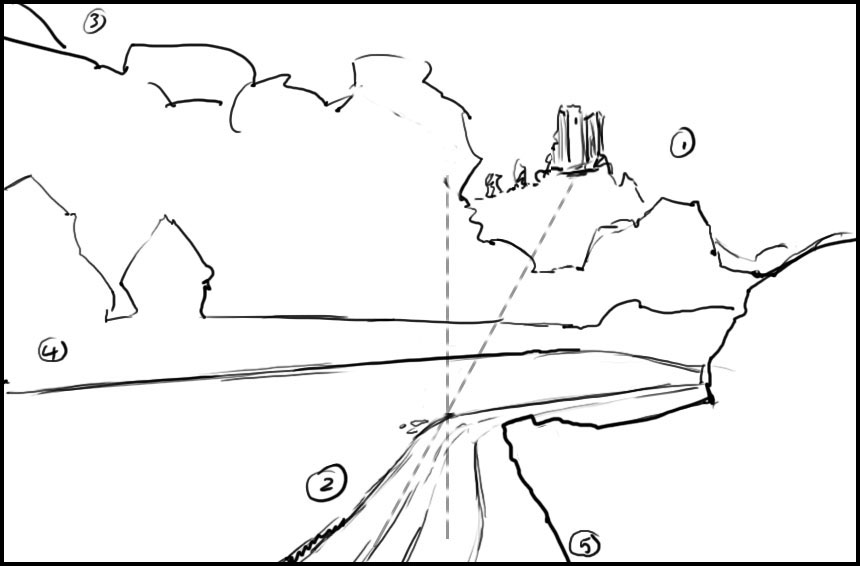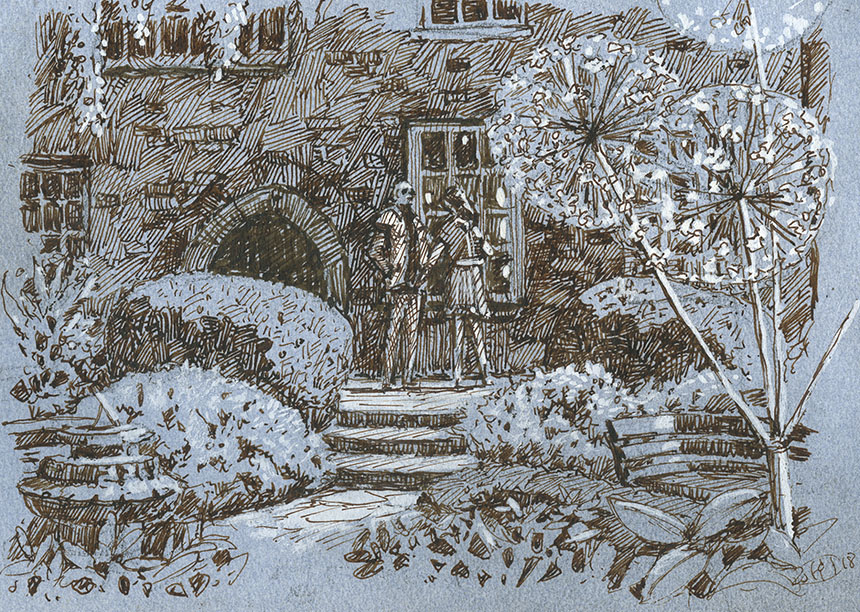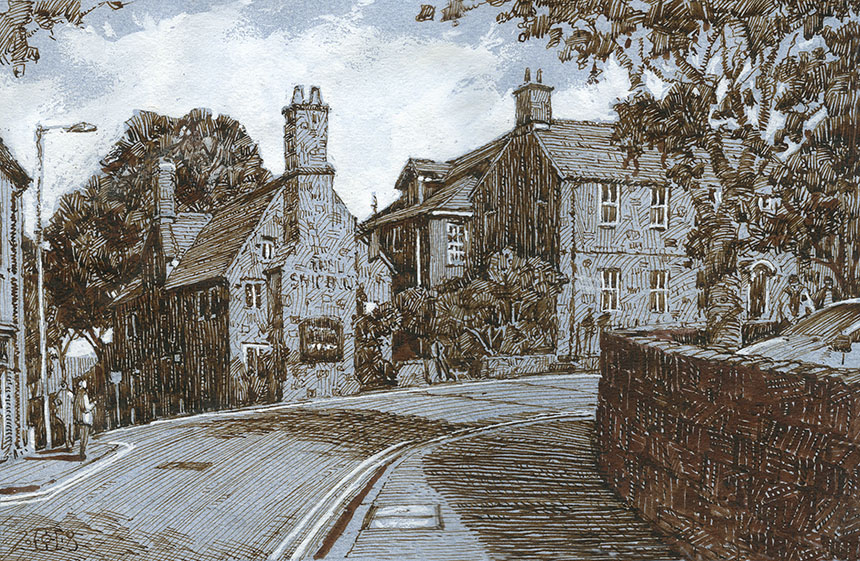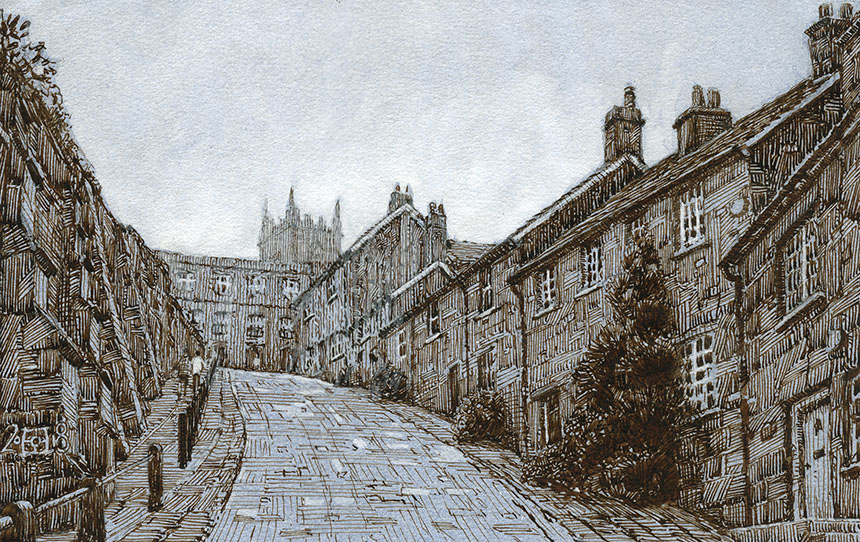Emotion. We all want it in our work it would seem. Feeling, intuition, instinct all these are toted as desirable in an artist and their work. Logic, learning, systematic thought and pragmatism are less desirable it would seem. I am puzzled by how such a strange inversion of reality has taken hold. Animals have instinct, feeling and react intuitively, but they don’t make art. It is therefore almost certain that the scorned attributes of logic, systematic thought and learning are to blame for our creative bent. I just don’t see how any other conclusion can be reached. We might I suppose choose to beleive in mysterious “energies”, souls talking or the infinite speaking to us, but really that is the same as believing in fairies.
Michelangelo’s works, the cathedrals and even Stonehenge are the result of rational thought not instinct. I am not saying that feelings and intuitions are not valuable, far from it, but these understandings are often the result of a long process of internalised learning. Magical thinking is so deeply embeded in us that it is not going to go away. When a misfortune hits any of us we all curse some cruel higher power that has singled us out for an injustice. We say thank God, thank Heavens and believe our pets understand our every word. However playing music has taught me that the appearance of what appears to be moments of emotionally inspired expression are actually achieved by systematic hard work and practice. The muses do not whisper in our ears to inspire, we earn it by striving to understand and hard work.
It was said by Arthur C Clarke that: “Any sufficiently advanced technology is indistinguishable from magic.” and so it seems when an individual who had never learnt to paint and draw sees a masterpiece. Since they cannot concieve of creating such a thing themselves, they attribute its creation to some special or mystical inspiring force. This is not a problem provided that the artists themselves don’t believe in the myth. The present demise of many of the Arts today is unfortunately that many do believe just that. It is if a conjurer on stage actually believed that their slights of hand were true magic.
So I say to my fellow artists, there are no mystical inspirations, no magic tricks to gain mastery. There is no wellspring of creativity, no guidance from above. It is just hard work and practice. If you are one of those who presents some empty nonsense as a deeply meaningfull artwork then you are no better than a huckster, no matter how much some sucker pays for it at auction.
Now I have that off my chest may I con you with a few paintings?

A small 6in square painting of Wareham. Done from a phone snap through a windscreen but it had very interesting light and a subtle colour harmony. When I paint from snaps like this I set my timer so that I don’t go on too long. This was 30min’s worth.

Another from a photo. I was looking through old images of Bridport market looking for square compositions and this took my eye. 7in sq Oils.

Not sure about this one. As so often happens there are bits I like and bits that I am uncertain about. Putting a prominent figure into a landscape is always asking for trouble. I decided the figure had to be developed enough that you would try to gauge their mood and the landscape needed to be subservient. Not altogether sure I succeeded though. 10in Sq Oils.

Sorry I am hooked on squares at present. This the church near Tarrant Crawford, it still has medieval wall paintings just about surviving on its walls. In this one the figure works much better. I allowed the light to embed the figure in the space. 7.5in sq Oils.

This is Hambledon Hill from Hammoon. In the 45 min it took to paint I was hailed on, rained on and snowed on… hard to focus on making a painting. 6in Sq. Oils.

Tired of square ones yet… a few more still to come, they will call this my square period. This is Kington Magna. I must have a go at this view on the spot. Quite hard to get a position to paint from that explains the charm of the place. 7.5in sq. Oils.

Another small 6in sq of Hanford School. I painted this hand held in under 30 min. I must get back at this time of day and do a larger one as it often looks very beautiful. Oils

Another hand held job. No way to set up a tripod easel on the road bridge over the Stour at Blandford. This another view I keep on coming back to, such a pity the traffic makes it almost impossible to do plein air. When I was doing this some of the lorry wing mirrors were inches from the back of my head! 6in Sq Oils.

Sea fret at Swanage. Less than 30 min this one as the fret dissolved into a bright sunny dat as I painted. Great fun to try and catch such transitory effects. 8in sq Oils.

I hadn’t done a complex urban scene for a while. It was very hard work and took well over an hour but the light stayed with me which was good. 10in sq. Oils.

Don’t know why I painted this one, very unlikely to find a buyer. I was almost back to my car when I was taken by the light and decided I would have a go. The young lady walking briskly down to the car park was a gift I could not turn down.
So that is the end of my square period… next the pentagonal period…

